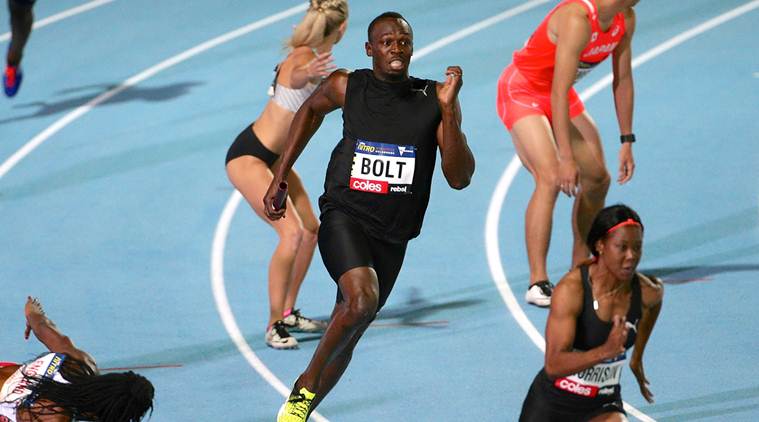
It may seem a pointed question – but what is the point of a mixed relay? Is it something you actively want to see in sport – in the way you do, say, a men’s relay? Or a women’s relay?
Wash me in steep-down gulfs of liquid fire if I’m wrong, but I’m thinking not.
One sport after another has been obliged to doff its cap to the International Olympic Committee (IOC) by introducing this concept into their competitions.
Modern Pentathlon and triathlon have already mixed things up within their regular competitions. And this week it has been announced that mixed relays in athletics and swimming will be added to the program for the next Olympics at Tokyo 2020 with a men’s and women’s 4×400 meter race being held on the track and a corresponding 4x100m medley in the pool.
A mixed Olympic team relay is also being added in triathlon, along with mixed team events in judo and archery and a mixed doubles competition in table tennis, doubling the total number of mixed events at the Games from nine to 18.
As a result a record 48.8 percent of the Tokyo 2020 quota will now be female, which is up from 46.1 at Rio 2016, and close to the IOC’s aspirational 50 percent target.
These shifts – which are allied to the inclusion of new sports in surfing, sport climbing, skateboarding, karate, baseball and softball – represent what IOC President Thomas Bach is calling “a step-change in the Olympic program.”
“I am delighted that the Olympic Games in Tokyo will be more youthful, more urban and will include more women, Bach said.
The Games must evolve to survive – that is axiomatic. So hard – or on occasion politically expedient – decisions will be made about which sports should be in or out. And yes, in order to work towards gender participation rates, some men’s events may have to be sacrificed in favor of women’s events.
Thus, in February, the world rowing body FISA made the difficult decision to cut the men’s lightweight sweep rowing four (LM4-), despite its recent history of exciting and open racing, and add a women’s heavyweight four.
Similarly, canoeing and shooting have transferred three events from men to women.
But then we have the additional IOC operation of reclassifying some events as “mixed”.
Nobody is arguing – well, certainly I am not arguing – that women should not have 50 percent of the representation in future Olympics. But if all these mixed events are the means of increasing that representation, why not simply increase women’s events?
And if they are not being introduced for this reason, then frankly, why bother?
The mixed singles in tennis are not, and will never be, anything other than an adornment to most tournaments. The format, admittedly, creates some uniquely intriguing moments – a female partner prepares to receive a booming serve from her male opponent; maybe she turns that brute power back on itself. And there is an age old fascination in seeing how a man and a woman combine their particular strengths in a common cause.
But in terms of interest, mixed doubles will always be in fifth place behind men’s and women’s singles and doubles.
And while the varieties and subtleties of tennis make it possible for women players to outwit or outmaneuver male opponents, there is no such range of possibility in events like swimming or athletics.
There may be some interest in the order in which male and female runners are deployed, with tactical variations being possible. That was evident in some races at the Nitro Athletics event staged at Melbourne in February with admirable enterprise by the Australian athletics federation.
The Nitro event was an all-out effort to experiment with traditional formats in order to try and create an event with a significantly different vibe, and thereby to attract wider interest with a younger audience. While it retained its core of athletics tradition, it was, proudly and in the best sense of the word, a novelty event, conceived of to run concurrently with the traditional forms of the sport rather than to replace them.
But the Olympic Games are not, and should not be, a novelty event.
The bottom line is that, in sports such as swimming, athletics and triathlon, a mixed relay will mean a relay between two faster athletes and two slower athletes, in whichever order they are deployed.
There is no room for finesse in a 4x400m race. A fast woman will be passed by a fast man. Full stop.
Do the IOC think that a plethora of mixed events within their quadrennial Games will inspire spectators – or future athletes? If so, I beg to differ.
Who ever got worked up about mixed sport? Which youngster will ever exclaim to their coach: “”No! I am going to be a mixed relay competitor whether you like it or not!” Or reflect: “Some people are born for mixed sports, and I am one such.”
Will the IOC now follow up in this direction and turn its attention to mixed volleyball, mixed basketball, mixed football?
There is a difference between innovation and novelty, and in its new-found fervor for mixed events the IOC is in danger of veering towards the latter, to the detriment of its Games.
By Mike Rowbottom
Republished with permission from insidethegames.biz.